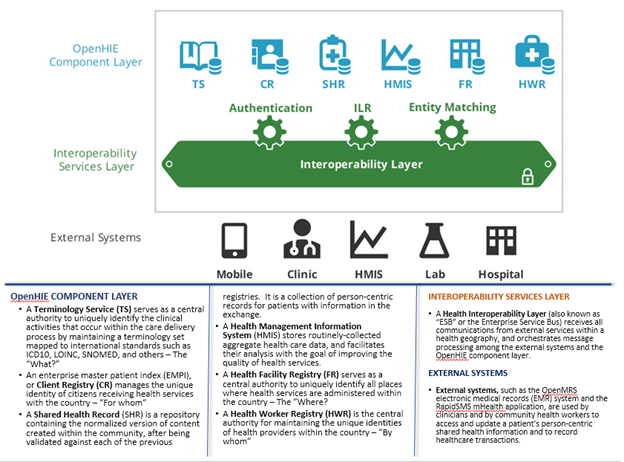
We believe in the collective knowledge of the masses and that as a network we are our own experts in both posing our questions and finding answers to them. As this is a new space within OpenHIE we would like you to add, edit and suggest changes on what you would like to see on the OpenHIE Implementers Network section. What answers do you want, what isn't really that clear (it may just be a reformatting or bringing together of content from the broader OpenHIE site but it is still important to know). WE have done a short poll internally and as a start have highlighted the following as areas that would be valuable, please contribute or call out what would fit in these areas and suggest others:
The implementers page should have a basic OpenHIE overview to ensure that implementers actually understand what OHIE is and what it isn’t. The layman’s guide is a good start but would want a bit more
Architecture overview
The page should have a space where implementers can find “Quick Start” information in getting OpenHIE setup and or stood up. It should also unpack its design ideas (implementable and not just installable - in that it should be implemented after design of solution and not to design the solution)
A list of FAQs that are and will arise out of the mailing lists
A space where existing and or planned implementations are listed AND Described. We would want to provide a very very basic easy to use implementation description template that would allow implementers to share what they are doing, basic designs and set the tone for conversations.
A high level overview of OpenHIE from what it does and what it doesn’t do. Looking to try and answer is OpenHIE for “me”; reference where it is and what is being done with it. How it has been applied in different ways.
Considerations of content for a high-level overview:
In order to effectively provide governance oversight for the HIE architecture and its constituent business and technical components, it is recommended to establish a Governance Framework for sponsorship thus ensuring policies, standards and processes are established for health information exchange among "a set of participants.
"HIE governance refers to the establishment and oversight of a common set of behaviors, policies,
and standards that enable trusted electronic health information exchange among a set of participants."
-- U.S. Gov't Office of the National Coordinator for Health Information Technology (ONC)
It is thought that Principles and 'actions' above could be adapted and combined with the OpenHIE Governance and Principles as a starting place for determining the appropriate governance model or models needed within the context of low-resource settings, or the needs of a particular country or Domain setting. Bearing in mind that varying degrees of design and implementation may need to be considered due to the potential needs of less or more complex scenarios. Not all countries are equal in their need to implement all the features of an HIE and connected systems strategy.
This type of Governance may not be suitable for all regions within which an HIE is instituted, but nonetheless provides overarching concepts and principles which are comprehensive enough to handle diverse strategy, planning and governance concerns.
Budgeting
Data Standards
Privacy Framework
Policies
Regulatory Framework
eHealth Framework

Figure: OpenHIE Architecture
In the diagram above are depicted the building blocks of a Health Information Exchange based upon the the OpenHIE Architecture, namely: Client Registry, Facilities Registry, Health Management Information System, Health Worker Registry, Shared Health Record, and Terminology Services, and the Interoperability Services Layer that interconnects them all and provides Authentication, Interlinked Registries, and Entity Matching services.
The framework of components of HIE provides for integration with various standards compliant systems and tools, such as (but not limited to):
Country and Partner EHRs
Laboratory Information Management Systems (LIMS)
Logistics Management Information Systems (LMIS)
Pharmacy Information Systems
etc.
OpenHIM Mediators
There are a few key assumptions that are made when considering OpenHIE. (( Help us build these out and write them out to why they are impactful and how to mitigate them ))